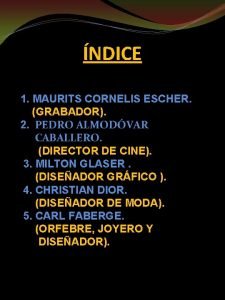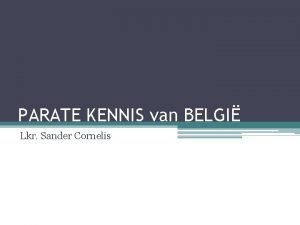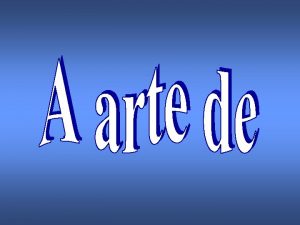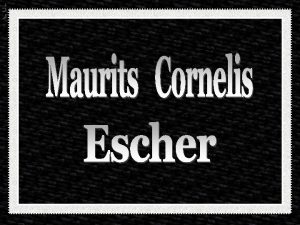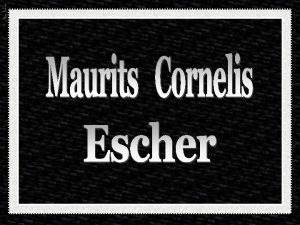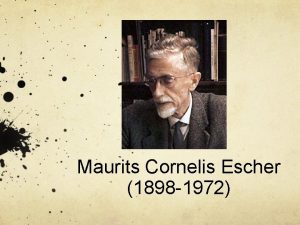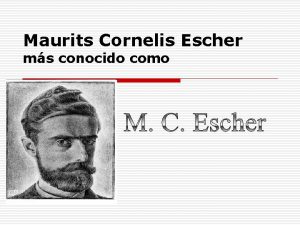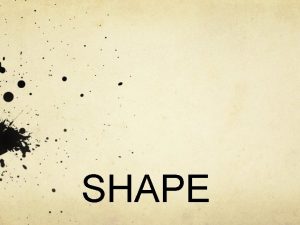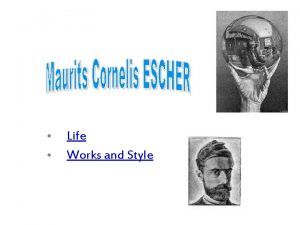Maurits Cornelis Escher M C Escher Levy H









- Slides: 9

Maurits Cornelis Escher (M. C. Escher) Levy H. Period 4 5/5/15

M. C. Escher Was a Dutch graphic artist Known for his mathematically inspired woodcuts, lithographs, and mezzotints Feature impossible constructions, exploration of infinity, architecture, and tessellations Self-Portrait Lithograph, 1929

Early life Born in Leeuwarden, Friesland, in a house that forms part of the Princessehof Ceramics Museum today. The youngest son of civil engineer George Arnold Escher and his second wife, Sara Gleichman. was a sickly child, and was placed in a special school at the age of seven and failed the second grade. Although excelled at drawings, his grades were generally poor. Attended the Haarlem School of Architecture and Decorative Arts, and left school after having gained experience in drawing and making woodcuts

Later life In 1922(an important year of his life), traveled through Italy & Spain. He was impressed by Italian countryside and the Alhambra, a fourteenth-century Moorish castle in Granada. Met Jetta Umiker in Italy, whom he married in 1924 and had three sons. In 1935, political climate under Mussolini made Escher and his family to leave Italy to Switzerland, and moved again to Belgium.

Later Life (2) World War II forced them to move in January 1941, this time to Baarn, Netherlands, where Escher lived until 1970. Most of Escher's better-known works date from this period. Moved to the Rosa Spier Huis in Laren in 1970, an artists' retirement home in which he had his own studio Died at the home on 27 March 1972, aged 73.

Waterfall Litograph first printed in October 1961. shows an apparent paradox where water from the base of a waterfall appears to run downhill along the water path before reaching the top of the waterfall.

Ascending and Descending Litograph first printed in 1960 depicts a large building roofed by a never-ending staircase. Two lines of identically dressed men appear on the staircase, one line ascending while the other descends. Two figures sit apart from the people on the endless staircase: one in a secluded courtyard, the other on a lower set of stairs.

Homage “Balcony” By MC Escher

Reflection I learned new things about M. C. Escher from making this slideshow. I started to like M. C. Escher and his style of conflicting proportions to create the visual paradox. Some of his artworks aremesmerizing to look at, and overall his art is really unique. The fact that he uses mathematic in his artworks also proves that art can be anything.
